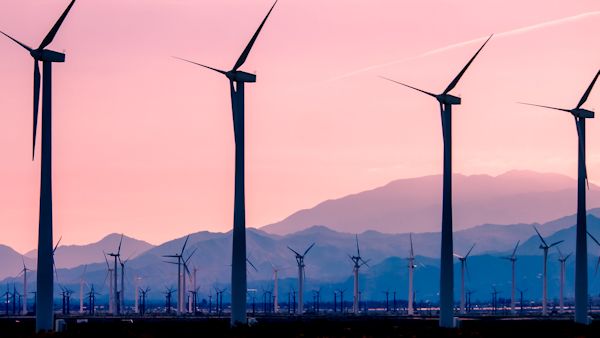SEJournal Online is the digital news magazine of the Society of Environmental Journalists. Learn more about SEJournal Online, including submission, subscription and advertising information.
 |
| The San Gorgonio Pass Wind Farm, one of three biggest in California. A growing database can be used to check wind turbines throughout the United States, with nearly 60,000 facilities listed at last check. Photo: Ian D. Keating, Flickr Creative Commons. Click to enlarge. |
Reporter’s Toolbox: Trailing the Wind, With Massive Turbine Spreadsheet
By Joseph A. Davis
Wind turbines — these clean, renewable-energy powerhouses are sprouting almost everywhere across the United States. And thanks to a great database, finding them is easy. That can help journalists, and their audiences, see the bigger picture.
At the simplest level, you could use this database to find all of the wind turbines in your state or locality for further reporting. You could, for example, talk to the neighbors to find out what they think of the turbines. Or talk to consumer groups, wildlife groups or farmers and ranchers.
You may gain insight by using this data in conjunction with some of the other wind energy data available. Some sources are listed here. Worldwide windpower data is available from The Wind Power, a commercial service, for a fee.
Where the data comes from
The database is the work product of several entities: the Energy Department’s Lawrence Berkeley National Laboratory, the Energy Department’s Wind Energy Technologies Office, the U.S. Geological Survey and the American Wind Energy Association.
You could use this database to
find all of the wind turbines
in your state or locality.
The data include technical specifications of each turbine, or at least all that are available. It also includes both onshore and offshore projects.
Although it has been building for several years, the latest release came out in July 2019. It is constantly updated and quality-checked. Last checked, it contained 59,884 turbines with a combined rated capacity of 97,042 MW.
How to use it smartly
The data is presented in map format and you can search it online or download it.
For those geeks who do want to download the data, it is geotagged and available in shapefile format, as well as in tabular format as a CSV file. Full metadata is available in XML format readable by any text editor.
Downloaders should start here. If you have ArcView software, it is compatible.
For more background on wind energy, check out SEJournal features, including:
- Tipsheet: The Renewables Revolution — A Renewable Source of News for Year Ahead
- TipSheet: Energy Markets Offer Clues on Environment’s Future
Plus, get the latest “wind” headlines from EJToday.
Joseph A. Davis is a freelance writer/editor in Washington, D.C. who has been writing about the environment since 1976. He writes SEJournal Online's TipSheet and Reporter's Toolbox columns. Davis also directs SEJ's WatchDog Project and writes WatchDog Tipsheet, and compiles SEJ's daily news headlines, EJToday.
* From the weekly news magazine SEJournal Online, Vol. 4, No. 33. Content from each new issue of SEJournal Online is available to the public via the SEJournal Online main page. Subscribe to the e-newsletter here. And see past issues of the SEJournal archived here.













 Advertisement
Advertisement 



